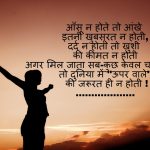Crafting Narrative Poetry to Tell Stories
Narrative poetry tells stories, in verse, combining the ability to tell a story with the verse form. It seizes moments, feelings, and actions in such a manner to bring readers to a lively world. The article provides suggestions on how to write narrative poetry that are easy to understand and follow, as they give practical guidelines to any beginner in writing narratives, which are interesting to read as a story.
A narrative poem narrates a story, be that a real memory, a fantasy adventure, or some historical event. The charm is that it creates imagined pictures through words, such that the reader feels an involvement in the story. To illustrate, others may resort to playing apps, such as aviator predictor apk, to engage in an interactive experience. In contrast, narrative poetry emphasizes storytelling through verse, where the recipients are free to use their imagination and relate to the story. Using only several methods, every person can become a poet who can render stories in words.
Drawing a story to narrate
Any poem with a worth-telling story is a narrative poem. It may be a childhood adventure, an old family legend, or just an imagined story of an exotic land. The early learners are advised to select such moments that would be touching, such as a stormy night or a cheerful party, because they would evoke powerful images and emotions.
The source of inspiration may be life or imagination stimuli. An idea could be triggered by a story a grandparent tells or by a busy street scene. Taking brief notes of important information, such as colors of a setting or emotions of a character, helps shape the poem.
Construction of the Structure of the Poem
A narrative poem must have a beginning, middle, and end, as with any good tale. It begins with a surprising picture, as it is in the case of the moon suspended low over a hushed village. In the middle is the action, the description of what happens or how one feels it, and at the end is the resolution, maybe the lesson or comment.
The free verse is suitable when one is just starting, so there is flexibility to concentrate on the narrative. A slight rhyme or rhythm, such as repeating a sound, can be added to convey feelings. As an example, a poem that speaks of a trip can have short lines that imitate speedy steps and engage the readers.
Some ways to structure a narrative poem include:
- Start with a vivid image to draw readers in.
- Build the story with clear, chronological events.
- Use short lines for fast-paced moments or longer ones for reflection.
- End with a meaningful resolution or open-ended thought.
Vivid Imagery
The use of imagery gives the story life. The poem adds sensory details and makes it immersive as a reader is told what characters see, hear, or feel. As an example, a poem that describes a market may contain such phrases as “the odor of ripe mangoes” or “the shout of vendors.” Such specifics allow the readers to visualize the scene.
Ordinary metaphors or comparisons make it deeper. The bravery of a character could be a fire within the dark, intense, and easy to understand. Maintaining a clear language will mean that the language will not become the focus of the story, which will welcome readers to the story.
Working the Poem
Editing finishes off a narrative poem. After reading aloud, one can tell that there is a problem with pace or clumsiness. The poem is made simple by the simplification of complex words, such as “flee” replaced with “run”. When the story is logical and there is no gap, it is easy to follow.
Feedback can be given when the author shares the poem with a friend or a writing group. They may be more suggestive of images or more explicit in the transitions. Revising after a day or two will enable one to see what can be done better with fresh eyes.
Some editing tips include:
- Read aloud to check the story’s flow and rhythm.
- Simplify words to keep the poem clear and relatable.
- Ensure the story has a clear beginning, middle, and end.
- Seek feedback to refine the narrative’s impact.
Telling the Tale
When it has been polished, it can be enjoyable to share a narrative poem. Reading it at a local reading, publishing it on the Internet, or telling someone you love makes the magic of the story spread. The audience is important even in a smaller size, as a family gathering gives meaning to the effort. Online poetry sites provide the freedom of being in touch with the readers and other poets.
Examples of narrative poets, such as Robert Frost, give one an idea of how verses can be used to tell a story. Their creations encourage first-time writers to try structure and imagery and to develop their voice.
Breaking Creativity Blocks
Writer’s block causes bad times or fear that a weak story is being written. Writing on a memory that you may be familiar with, such as a family trip, can trigger an idea. When stalled, creativity can be jump-started with a little scene drawing or a bit of free-writing on how a character might feel. It also really aids in accepting imperfection because it is not about perfection in telling a story.
Sharing may be a scary task, but the best friend should do the trick and calm the nerves. As a skill, it is possible to learn to write narrative poetry, and it is a very natural form to tell stories.
The maturation of a Narrative Poet
Writing of narrative poetry is another imaginative expression to perceive stories in verse. Through the selection of vivid moments, the use of imagery, and the editing process, poets achieve poems that engage people. The Internet does this as everybody shares work and learns to one another, thereby strengthening the craft. Gradually, narrative poetry evolves into a festive form of telling a story and transforming time into lines that would stay in the minds of the readers.








